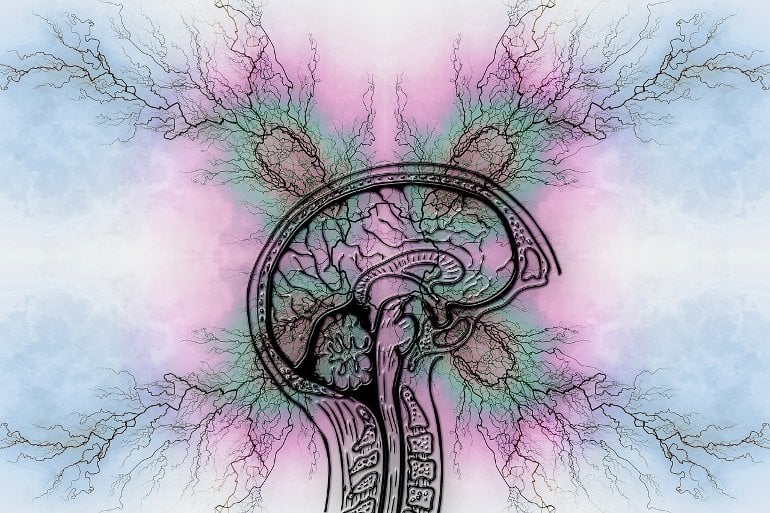Summary: The GM2A protein reduces neural firing and induces a loss of neurite integrity.
Source: Brigham and Women’s Hospital
Alzheimer’s disease (AD) currently has no cure and is predicted to affect over 100 million people worldwide by 2050.
Ongoing research is focused on two key neurotoxic proteins: amyloid beta (Aβ) and tau. While these proteins have been shown to be associated with AD, for some people with the disease, the levels of Aβ and tau do not consistently explain or correlate with the severity of cognitive decline.
To identify other proteins that may be directly involved with fundamental aspects of AD, like synaptic loss and neurodegeneration, investigators at Brigham and Women’s Hospital, a founding member of the Mass General Brigham healthcare system, exposed laboratory neurons to human brain extracts from about 40 people who either had AD, were protected from AD despite having high Aβ and tau levels, or were protected from AD with little or no Aβ and tau in their brains.
The researchers identified and validated ganglioside GM2 activator (GM2A) as a protein able to reduce neuronal firing and induce a loss of neurite integrity. These protein characteristics may contribute to the cause of AD, progression of the disease, or both.

“Our data helps identify a new and potentially important protein that may be associated with the pathogenesis of Alzheimer’s disease,” said senior author Tracy Young-Pearse, PhD, from the Department of Neurology.
“Interestingly, GM2A has been previously implicated as a causative agent in a lysosomal storage disorder very similar to Tay-Sachs disease, another condition like AD that destroys neurons.”
About this Alzheimer’s disease research news
Author: Haley Bridger
Source: Brigham and Women’s Hospital
Contact: Haley Bridger – Brigham and Women’s Hospital
Image: The image is in the public domain
Original Research: Open access,
“Elevated ganglioside GM2 activator (GM2A) in human brain tissue reduces neurite integrity and spontaneous neuronal activity” by Tracy Young-Pearse et al. Molecular Neurodegeneration
Abstract
Elevated ganglioside GM2 activator (GM2A) in human brain tissue reduces neurite integrity and spontaneous neuronal activity
Background
Alzheimer’s Disease (AD) affects millions globally, but therapy development is lagging. New experimental systems that monitor neuronal functions in conditions approximating the AD brain may be beneficial for identifying new therapeutic strategies.
Methods
We expose cultured neurons to aqueous-soluble human brain extract from 43 individuals across a spectrum of AD pathology. Multi-electrode arrays (MEAs) and live-cell imaging were used to assess neuronal firing and neurite integrity (NI), respectively, following treatments of rat cortical neurons (MEA) and human iPSC-derived neurons (iN) with human brain extracts.
Results
We observe associations between spontaneous activity and Aβ42:40 levels, between neurite integrity and oligomeric Aβ, and between neurite integrity and tau levels present in the brain extracts. However, these associations with Aβ and tau do not fully account for the effects observed. Proteomic profiling of the brain extracts revealed additional candidates correlated with neuronal structure and activity. Neurotoxicity in MEA and NI assays was associated with proteins implicated in lysosomal storage disorders, while neuroprotection was associated with proteins of the WAVE regulatory complex controlling actin cytoskeleton dynamics. Elevated ganglioside GM2 activator (GM2A) associates with reductions in both NI and MEA activity, and cell-derived GM2A alone is sufficient to induce a loss of neurite integrity and a reduction in neuronal firing.
Conclusions
The techniques and data herein introduce a system for modeling neuronal vulnerability in response to factors in the human brain and provide insights into proteins potentially contributing to AD pathogenesis.






